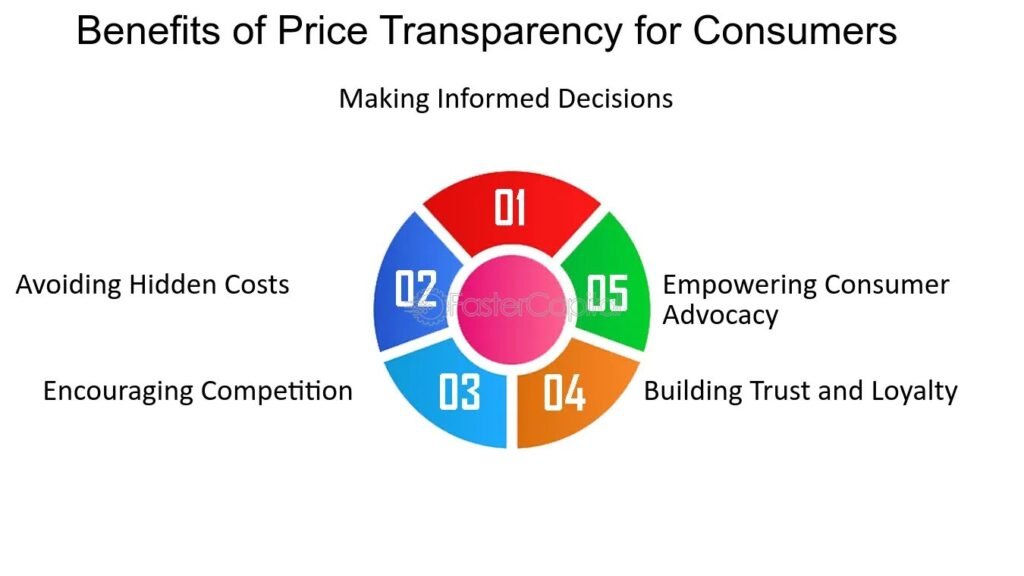Introduction
The Consumer Credit Directive (CCD) is one of the most important pieces of European Union legislation calculated to control the credit market and guard consumers. Its chief aim is to guarantee fairness, lucidity, and trust between lenders and borrowers across EU affiliate states. By opposite credit rules, the directive helps consumers contrast offers, appreciate costs, and make conversant borrow decision.
In a modern wealth where credit cards, loans, and finance options are part of daily life, the CCD plays a critical role in conservation fiscal stability. It sets legal standards for publicity, disclosure of notice rates, contract clarity, and borrower rights. This makes it easier for consumers to steer credit markets and avoid falling fatality to unfair lending practice. In this thorough guide, we will discover the objectives, scope, rights, errands, and impact of the Consumer Credit Directive.
Table of Contents
What is the Consumer Credit Directive?
The Consumer Credit Directive (order 2008/48/EC) is an EU order initiate in 2008, with change over time, to create a consistent legal frame for consumer credit agreement. It applies to loans and credit range from €200 to €75,000, jacket harvest like personal loans, credit cards, overdrafts, and payment finance.
The directive ensures that all lenders operating in the EU provide clear, comparable, and transparent information about credit offers. This makes it easier for consumers to charge unlike options and prevents deceptive or violent advertising tactics by financial institution.

Key Objectives of the consumer credit directive
- lucidity: Ensuring consumers appreciate the true cost of credit.
- Consumer shield: conservation borrowers from unseen charges or unjust practices.
- Market mixing: Allowing credit provider to work crossways EU limits under consistent rules.
- opposition improvement: Helping consumers contrast offers and hopeful fair competition among lenders.
Extent of the Consumer Credit Directive
The CCD applies to a wide range of credit agreements but excludes certain financial products like mortgages, small-scale loans under €200, and very large business credits.
Credit Types Covered
- Personal loans
- Credit cards
- Store financing or installment credit
- Overdraft facilities
- Leasing with purchase options
Credit Types Exempted
- Mortgage loans
- Real estate financing
- Interest-free loans
- Employer loans (under specific terms)
- little loans under €200 and credits over €75,000
This extent ensure that daily consumer borrow is synchronized while exclude compound financial harvest that fall under divide EU frameworks.
Lucidity in Credit publicity
One of the biggest contributions of the CCD is the standardization of credit advertising. Any lender advertising a credit product must include a Representative Example that shows key details of the offer.
Mandatory Information in Ads
- Annual proportion Rate of accuse (APR)
- Total credit amount
- Duration of the agreement
- Installment amount
- Any related fees or charge
This prevent deceptive promotions where lenders emphasize only the low notice rate while hiding fees, commission, or uneven charge.
Also Read These:
Securities Financing Transactions
The meaning of the APR (Annual fraction Rate)
The APR is middle to the consumer credit directive since it provides a consistent dimension of credit costs. It include not only the notice rate but also all added charges such as dispensation fees, managerial costs, and commission.
Why APR Matters?
- Helps consumers compare different credit offers.
- Ensures transparency in total borrowing cost.
- Reduces risk of hidden or unclear charges.
For pattern, a loan with a low-interest rate but high managerial fees might truly be more classy than a higher-interest loan with no cost. The APR calculation makes such comparisons possible.
Consumer Rights Under the consumer credit directive

The directive empowers consumers with several rights that protect them from unfair or exploitative lending practices.
1. Right to Pre-Contract Information
Before sign a credit accord, consumers must obtain a Standard European Consumer Credit in sequence (SECCI) form. This document outlines:
- Loan amount
- Duration
- Interest rate
- APR
- Total refund quantity
- charge and penalty
2. Right of extraction
3. Early refund Rights
Borrowers can repay loans early and benefit from reduced interest. Lenders may charge a reasonable compensation fee,Consumers can remove from a credit harmony within 14 days lacking penalty, provide they return the major amount and pay accrue notice.
but it cannot surpass legal limits.
4. Right to Transparent Contracts
Contracts must obviously state refund terms, fees, penalty, and notice rates. unclear speech or hidden situation are sternly barred.
Obligation of Lenders beneath the consumer credit directive
While consumers are given rights, lenders also features severe tasks.
- evaluation of Creditworthiness: Lenders must check whether a borrower can practically refund the loan.
- Clear exposé: All charges, circumstances, and risks must be disclose frank.
- Fair conduct: No deceptive promotion or unfair contract clause.
- Cross-border observance: Credit provider must follow CCD rules crossways all EU states anywhere they function.
Consumer vs Lender Responsibilities
| Consumer Rights | Lender Obligations |
| Right to pre-contract information | Provide SECCI form with key details |
| Right of withdrawal (14 days) | Allow contract cancellation |
| Early repayment rights | Accept early repayments fairly |
| Right to transparent contracts | Ensure clarity and no hidden fees |
| Right to fair treatment | Conduct creditworthiness assessment |
Impact of the consumer credit directive on EU Credit Markets
The implementation of the CCD has transformed how credit markets function across Europe.
Positive Impacts
- Increased transparency in loan advertising.
- Greater consumer confidence in borrowing.
- Harmonization of credit rules across EU states.
- Easier access to cross-border credit services.
Challenges
- Implementation differences among member states.
- Compliance costs for smaller lenders.
- Consumer over-reliance on credit despite protections.
How the Consumer Credit Directive strengthen Consumer defense
The Consumer Credit Directive (CCD) is not just about standardize credit agreement; it is essentially a protection device for consumers. Many borrowers fall into debt traps since of unclear terms, hidden charge, or violent lending. The CCD addresses these issues directly by creating a legal safety net.
Protection Against Misleading Marketing
Before the directive, lenders often advertised credit products in a way that emphasized only benefits while hiding risks. The consumer credit directive ensures that all essential details, including APR, repayment schedules, and fees, are displayed in advertisements.
Protection Against Over-Indebtedness
The consumer credit directive obligate lenders to conduct a creditworthiness appraisal before yielding loans. This prevent irresponsible lending and protect consumers from borrow more than they can give.
guard Through clearness
All terms must be clearly stated in simple language, preventing legal loopholes or hidden conditions. Borrowers now have the legal right to challenge unfair contract terms in court
Cross-Border Credit: A Unified Market

One of the key achievements of the CCD is the creation of a harmonized credit market across the EU. Previously, consumers faced barriers when applying for loans from foreign lenders due to inconsistent national rules.
profit of Cross-Border Credit
- augmented Choices: Consumers can admission credit from lenders in other EU state.
- rivalry: Lenders must fight rather, donation better rates and situation.
- mixing: A more linked European fiscal scheme.
For example, a French consumer can now apply for a loan from a German lender under the same consistent rules, which increase justice and trust.
Challenge in execution
though the consumer credit directive has brought many improvements, some challenge remain in its enforcement and application.
1. National Variations
While the CCD sets smallest standards, member states sometimes add their own rules, which can cause inconsistencies in request.
2. fulfillment Costs for Lenders
Small lenders, such as local credit union, face higher fulfillment costs due to formalities and system. This can reduce competition in some markets.
3. Consumer Awareness
Many consumers are not fully aware of their rights under the consumer credit directive. Lack of financial education means protections are underutilized.
The 2021 review of the Consumer Credit Directive
recognize embryonic financial landscape, the EU introduce reform in 2021 to reinforce consumer protection. These revision reflect change in digital economics and online lend.
Key update in 2021 review
- Digital Credit policy: Stronger strategy for online and mobile lend.
- Microloans enclosed: Loans below €200 are now synchronized.
- Stricter Affordability check: Lenders must use thorough data to guarantee refund aptitude.
- defense Against High-Cost Loans: Caps on notice rates and charge in convinced cases.
These reform guarantee that the CCD stays pertinent in a digital-first fiscal situation.
Role of Financial teaching
The consumer credit directive also indirectly promotes financial literacy. When consumers receive clear SECCI forms, APR breakdowns, and transparent contracts, they learn to compare credit offers more effectively
Why Financial Literacy Matters?
- Prevents over-indebtedness.
- Helps in recognizing unfair practices.
- Improves personal financial planning.
Educational campaigns combined with CCD protections make consumers more responsible borrowers.
Old CCD vs 2021 Revised consumer credit directive
| Aspect | Old CCD (2008) | Revised CCD (2021) |
| Loan coverage | €200 – €75,000 | Now includes loans below €200 |
| Digital credit | Limited guidance | Specific rules for online/mobile lending |
| Interest rate caps | Not harmonized across EU | Encouraged in high-risk lending cases |
| Affordability checks | General assessment | Stricter data-based creditworthiness test |
| Consumer protection scope | Traditional credit products | Extended to microloans and digital loans |
The CCD and Digital Transformation
The rise of FinTech companies, mobile banking apps, and online lenders has reshaped the credit industry. The CCD had to adapt to ensure these platforms follow the same consumer protection principles.
Digital Lending Under the CCD
- Lenders must still provide SECCI forms, even online.
- Consumers must have the right to withdraw within 14 days, even for digital loans.
- Transparency in mobile apps is mandatory, including clear APR display.
This ensures that digital credit convenience does not come at the cost of consumer safety.
Advantages of the consumer credit directive for Consumers
The directive creates tangible benefits for borrowers across Europe.
Key Advantages
- Fair borrow – Loans cannot comprise hidden fees or deceptive clause.
- Legal privileges – Consumers can cancel contracts or refund untimely.
- Confidence in Lenders – EU-wide rules increase trust in credit markets.
- Better Comparison – Standardized APR and SECCI make it easy to compare loans.
- Cross-Border Opportunities – Access to credit providers beyond national borders.
Advantages of the CCD for Lenders
though the CCD is often seen as consumer-focused, it also profit lenders.
- Market Access: Lenders can function across the EU under united rules.
- standing edifice: translucent practice augment customer trust.
- Lower Risk: Creditworthiness checks reduce default risks.
- Digital Growth: FinTech lenders gain legitimacy by following consumer credit directive standards.
Thus, the CCD creates a win-win environment where consumers are protected, and lenders operate in a fair market.
Case Study: Impact in Germany and France
To understand its real-world effects, let’s examine Germany and France, two of the EU’s largest credit markets.
Germany
- Known for strict financial regulation.
- CCD strengthened existing consumer rights, making loan contracts more transparent.
- Early repayment rights were particularly beneficial for German borrowers.
France
- The CCD helped streamline diverse lending practices.
- better cross-border credit opportunity, specially with adjacent country.
- Stricter publicity rules reduced deceptive promotions in consumer credit.
Both country saw augmented consumer confidence and fairer opposition among lenders.
Confines of the Consumer Credit Directive

While the CCD has greatly better consumer defense, it is not without confines. recognize these confines helps policymakers, lenders, and consumers recognize areas for development.
Main confines
- Complex Legal speech – Even with SECCI forms, some borrowers find the industrial phrasing difficult to appreciate.
- Varied nationwide Enforcement – Some country implement the instruction more severely than others, create gaps in consumer experience.
- barring of Certain Loans – although the 2021 update, some forms of lend, such as peer-to-peer loan, still fall into grey area.
- alertness Gap – Many borrowers do not know about their right to remove within 14 days or their early refund rights.
These challenge mean that while the CCD sets a strong basis, ongoing revisions and public alertness campaigns are necessary.
Prospect of the Consumer Credit Directive
As the monetary scenery continues to evolve, the CCD must adjust to new challenge like digital lend, cryptocurrency-based credit, and AI-powered credit score.
predictable Future development
- Stronger Digital system: More stress on online platform and mobile lend.
- AI lucidity Rules: ensure AI-driven creditworthiness assessment are fair and impartial.
- Cross-Border Digital economics: development of protection for digital wallets and global lend apps.
- Green Credit foodstuffs: support of sustainable credit agreement, e.g., for ecological purchase.
By custody pace with technology and consumer actions, the CCD will stay a pillar of financial defense in the EU.
How Consumers Can Use the CCD to Their benefit
Consumers can exploit the payback of the CCD by being practical and conversant.
Practical Tips for Borrowers
- forever Check the APR – It gives the full cost of borrow, not just the notice rate.
- Read the SECCI Form cautiously – This article contain all the imperative details of your loan.
- Know Your 14-Day extraction Right – If you lament taking a loan, you can cancel without price.
- Consider Early refund – Paying off debt early can save important notice costs.
- Compare Offers Across Borders – Use the coordinated market to your benefit by explore lenders in other debt EU country.
By vigorously using these rights, consumers can avoid trap and choose fiscally sound borrow options.
The consumer credit directive and monetary constancy
The instruction also contribute to broader financial and monetary stability within the EU.
How It ropes steadiness
- prevent irresponsible lend – Creditworthiness checks lessen the risk of extensive default.
- Builds Consumer poise – translucent loans augment trust in monetary institution.
- Supports Fair Competition – By standardize rules, all lenders function on a level singing field.
- encourage Responsible borrow – With clear conditions, consumers are less likely to overborrow.
Thus, the CCD is not only about entity consumer privileges but also about maintain a strong credit system across Europe
Comparison with Other Directives
The CCD is part of a larger network of EU consumer protection legislation.
CCD vs Mortgage Credit Directive (MCD)
- CCD: Focuses on consumer loans, credit cards, overdrafts.
- MCD: Applies specifically to mortgages and real estate financing.
CCD vs Consumer Rights Directive (CRD)
- CCD: Deals with financial agreements and credit transparency.
- CRD: Covers general consumer protection, online shopping, returns, and guarantees.
This comparison shows that the CCD is specialized for financial products, working alongside other directives to form a comprehensive consumer rights framework.
Benefits and Challenges of the CCD
| Benefits | Challenges |
| Standardized APR calculation | Varied enforcement among member states |
| Right to withdraw within 14 days | Complex legal wording in documents |
| Early repayment rights | Exclusion of some loan types |
| Transparent advertising requirements | Lack of consumer awareness |
| Cross-border lending opportunities | Compliance costs for smaller lenders |

Real-Life Example: A Borrower’s Journey
Consider Maria, a consumer in Spain looking for a personal loan of €5,000.
- Pre-Contract Information – She receives the SECCI form from her bank, detailing the APR, repayment schedule, and total costs.
- Comparison – Using the standardized information, she compares offers from a French lender online.
- Decision – Maria choose the French loan because of inferior APR and supple refund terms.
- Right of extraction – After one week, Maria reassess and uses her 14-day removal right without value.
- Early repayment – Later, she takes another loan and pays it off untimely, saving hundreds of euros in notice.
This case shows how the CCD empower consumers to make conversant fiscal decisions.
Conclusion
The Consumer Credit Directive is a keystone of EU consumer guard law. By ensuring lucidity, justice, and consumer rights, it reform the credit market into a reliable, competitive, and consumer-friendly situation. The training not only protect entity borrowers but also strengthen overall monetary firmness in the European Union.
As monetary knowledge continue to evolve, future update will keep the CCD applicable in the age of digital lend, AI credit score, and cross-border fiscal services. For now, it remains a influential shield beside unfair lend and a guide for guilty borrow.
FAQs
1. What is the Consumer Credit Directive?
The CCD is an EU law that standardize rules for consumer loans, ensure lucidity, fairness, and defense for borrowers.
2. Which loan are enclosed beneath the CCD?
It covers individual loans, credit cards, overdrafts, and repayment finance between €200 and €75,000. Mortgages are barred.
3. What is the 14-day extraction right?
Consumers can cancel a loan concord within 14 days without price, provide they return the rented money and pay any accrue notice.
4. How does the CCD defend beside unseen fees?
It require lenders to unveil all charge during the APR and SECCI form, prevent hidden or deceptive costs.
5. Does the CCD relate to online loans?
Yes, specially after the 2021 revision. Online and mobile lenders must follow the equal rules, counting clearness and consumer privileges.
.
